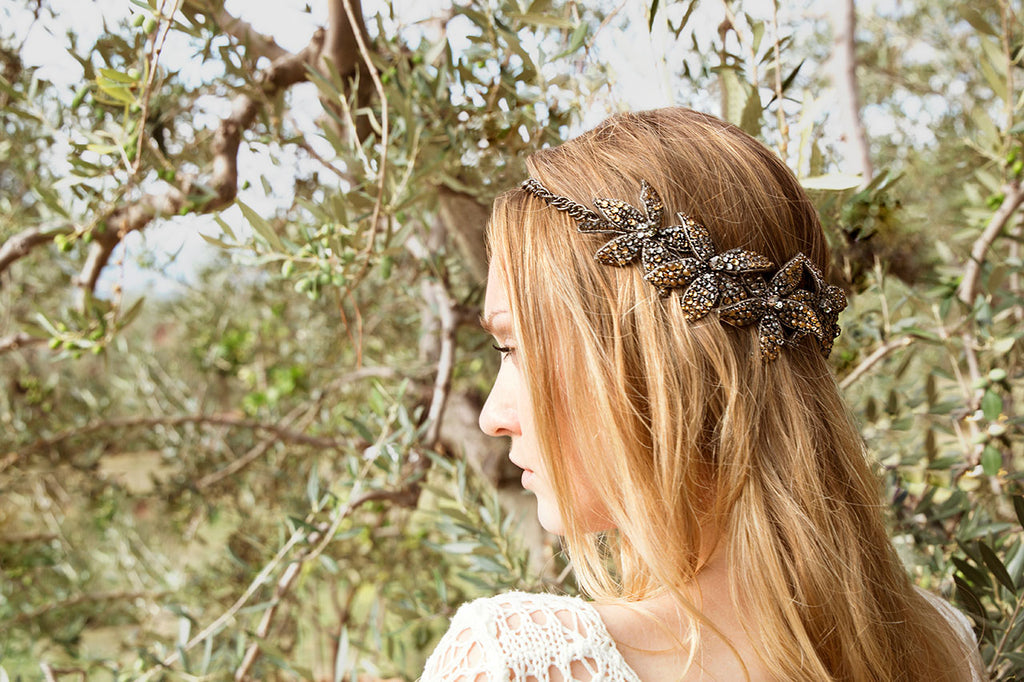In the vast tapestry of fashion history, there are certain accessories that have stood the test of time, through centuries of ever-changing trends and styles. One such accessory is the humble headband. From ancient times to modern-day runways, the headband has weaved its way through culture, society, and fashion, making its mark with both practicality and style. Join us on a journey through the fascinating history of the headband, as we unravel the thread that connects this timeless accessory to our ever-evolving sense of fashion.

Origins of Headbands: Uncovering Ancient Roots
Headbands have been a fashion accessory for centuries, with a history that dates back to ancient civilizations. In many cultures, headbands were not only worn for aesthetic purposes but also held symbolic significance. Let’s take a journey back in time to uncover the origins of these versatile accessories.
Ancient Egypt
In Ancient Egypt, headbands were a common accessory worn by both men and women. These headbands, often made of leather or fabric, were adorned with jewels and symbolic ornaments. They were believed to provide protection and bring good luck to the wearer.
Native American Tribes
Among Native American tribes, headbands were worn as a symbol of status and identity. Different tribes had unique designs and materials for their headbands, which were often decorated with feathers, beads, and intricate patterns. These headbands were also used in ceremonies and rituals to connect with spiritual forces.
Ancient Greece
Ancient Greeks also embraced headbands as a fashion statement. Known as ”taenia,” these headbands were made of fabric and worn by men and women alike. They were often decorated with symbols of Greek gods and goddesses, making them not just a practical accessory but a religious one as well.
Evolution of Headbands in Fashion: From Practicality to Statement Piece
Throughout history, headbands have played a crucial role in fashion, evolving from a simple practical accessory to a bold statement piece. The earliest known headbands date back to ancient Greece, where they were worn to keep hair out of the face during physical activities such as sports and warfare. These early headbands were often made of leather or fabric and were purely functional in nature.
As time went on, headbands began to take on a more decorative role in fashion. During the 1920s, flapper girls adorned their heads with beaded and sequined headbands as a way to add glamour to their hairstyles. In the 1960s, hippies embraced headbands as a symbol of peace and love, often wearing them with flowers woven into the fabric.
Today, headbands have become a versatile accessory that can be worn in a variety of ways to make a fashion statement. From sleek, minimalist designs to bold, oversized pieces, headbands come in all shapes and styles to suit any outfit. Whether worn to keep hair in place or to add a pop of color to an ensemble, headbands continue to be a beloved accessory that has stood the test of time.
Notable Headband Styles Throughout History
Throughout history, headbands have been a popular accessory worn by both men and women for various purposes. From ancient civilizations to modern fashion trends, headbands have evolved in style and significance.
One notable headband style from ancient Egypt is the “uraeus” headband, adorned with a cobra symbol representing protection and royalty. In ancient Greece, headbands known as “stephane” were worn by women as a symbol of status and beauty. These headbands were often embellished with jewels and intricate designs.
In the 1920s, the “flapper” headband became a popular trend among young women in the United States. These headbands were often made of velvet or silk and featured intricate beadwork and fringe. Fast forward to the 1960s, and headbands were a staple accessory for the “hippie” counterculture movement, often adorned with flowers and peace symbols.
In modern times, headbands have made a comeback on the fashion scene, with a variety of styles to choose from such as turban headbands, knotted headbands, and padded headbands. Whether worn for practical purposes or as a fashion statement, headbands continue to be a versatile accessory that transcends time and trends.
Modern Trends in Headband Design: Balancing Fashion and Function
Headbands have been a fashion staple for centuries, dating back to ancient Greece and Egypt. In ancient times, headbands were worn by both men and women as symbols of status or to keep hair in place during physical activities. They were often made of materials like leather, beads, or feathers, and adorned with intricate designs.
As time progressed, headband styles evolved to reflect the trends and fashions of each era. In the 1920s, flapper girls popularized the turban-style headband, while the 1960s saw the rise of the psychedelic-printed headbands worn by hippies. Today, headbands come in a wide variety of styles, from simple elastic bands to oversized statement pieces embellished with jewels and pearls.
While headbands have always been a fashion statement, modern trends in headband design now focus on striking a balance between fashion and function. Designers are incorporating innovative materials and technologies to create headbands that not only look stylish but also serve a practical purpose, such as absorbing sweat during workouts or holding hair in place without causing breakage. Whether you prefer a classic silk headband or a modern LED light-up headband, there is no shortage of options to choose from in today’s market.
In conclusion, the evolution of headbands throughout history has showcased their versatility and cultural significance. From ancient civilizations to modern fashion runways, headbands have remained a timeless accessory that continues to make a statement. Whether used for practical purposes or as a stylish adornment, the headband has undoubtedly left its mark on our collective fashion history. So next time you reach for that headband, take a moment to appreciate the rich tapestry of stories woven into its design. Embrace the past and wear it with pride, knowing you are carrying on a tradition that spans centuries.







